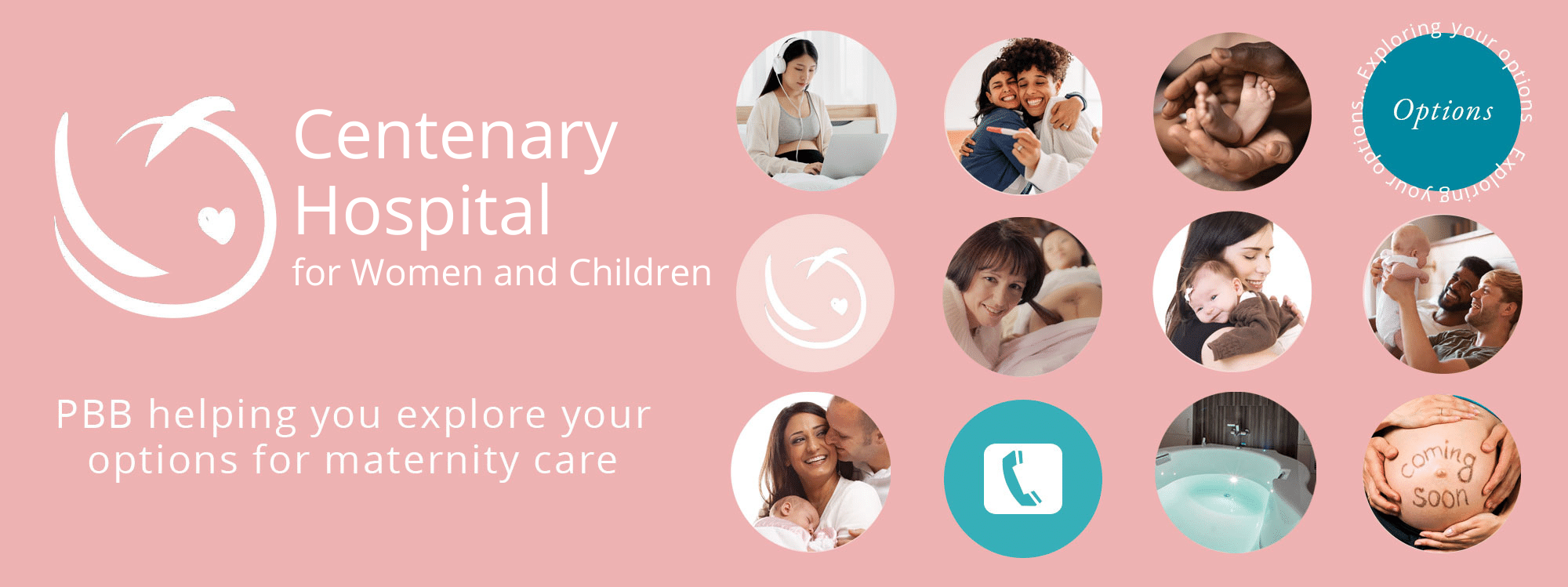
Centenary Hospital for Women and Children is located on Canberra Hospital, Yamba Drive (between Hindmarsh Drive and Kitchener Street) in the ACT suburb of Garran. There are over 180 mobility parking spaces available throughout the campus. The Canberra Maternity Options Service is a single admission point for all soon-to-be mothers wishing to access public maternity services in the ACT.
The Canberra Maternity Options Service (CMOS) offers women the proper care at the right place and time. In the Canberra Maternity, referral to CMOS at around 8 weeks is the optimal time, as the first CMOS appointment should be about 10 weeks. They offeer different birthing options to mothers most suitable for them. Once your pregnancy is confirmed, you can call them to book a meeting with your midwife. They will ask you several questions to better understand your health and medical history and your personal preferences about how you would like to be cared for.
Hospital Address
Yamba Drive, Garran, 2605
(02) 6244 2222
Website Centenary Hospital for Women and Children

Centenary Hospital for Women and Children Map
Centenary Hospital for Women and Children Services

Does Centenary Hospital have visiting private midwives?
NO

Does Centenary Hospital have visiting GP Obstetricians?
UNKNOWN

Does the Centenary Hospital have visiting Obstetricians?
YES
Hospital Facilities
Antenatal Beds
Birthing Rooms
Postnatal Beds
Special Care Nursery Beds
Neonatal Intensive Care Beds
Are there birth pools available for labour and birth?
Birth centres are designed to be a home away from home. A birth centre is a separate unit located away from the standard birth unit. Birth centres encompass a philosophy that pregnancy and birth are normal, natural events in the life of a woman and her family.
Does Centenary Hospital for Women and Children have a birth centre?
Birth Suite Tour Video
What support is available if I have difficulties breastfeeding my baby?
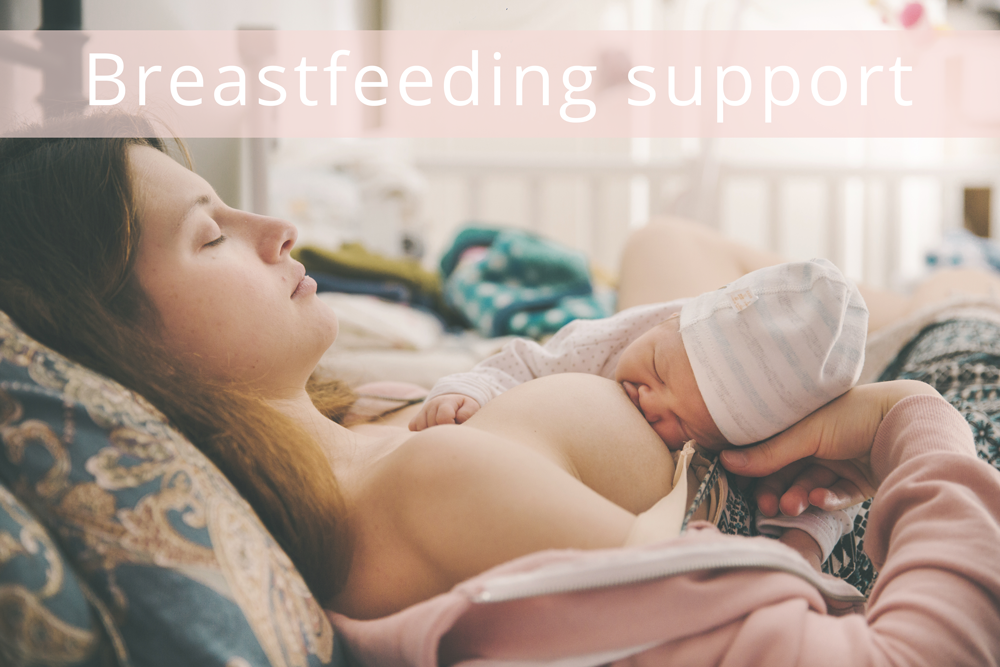
Baby-friendly accredited?
The hospital campus is a baby-friendly accredited hospital, and they encourage mothers to breastfeed their babies.
Centenary Hospital for Women and Children Statistics
PBB is unable to find separate statistics for individual hospitals in the ACT. The following statistics are from the ACT as a whole.
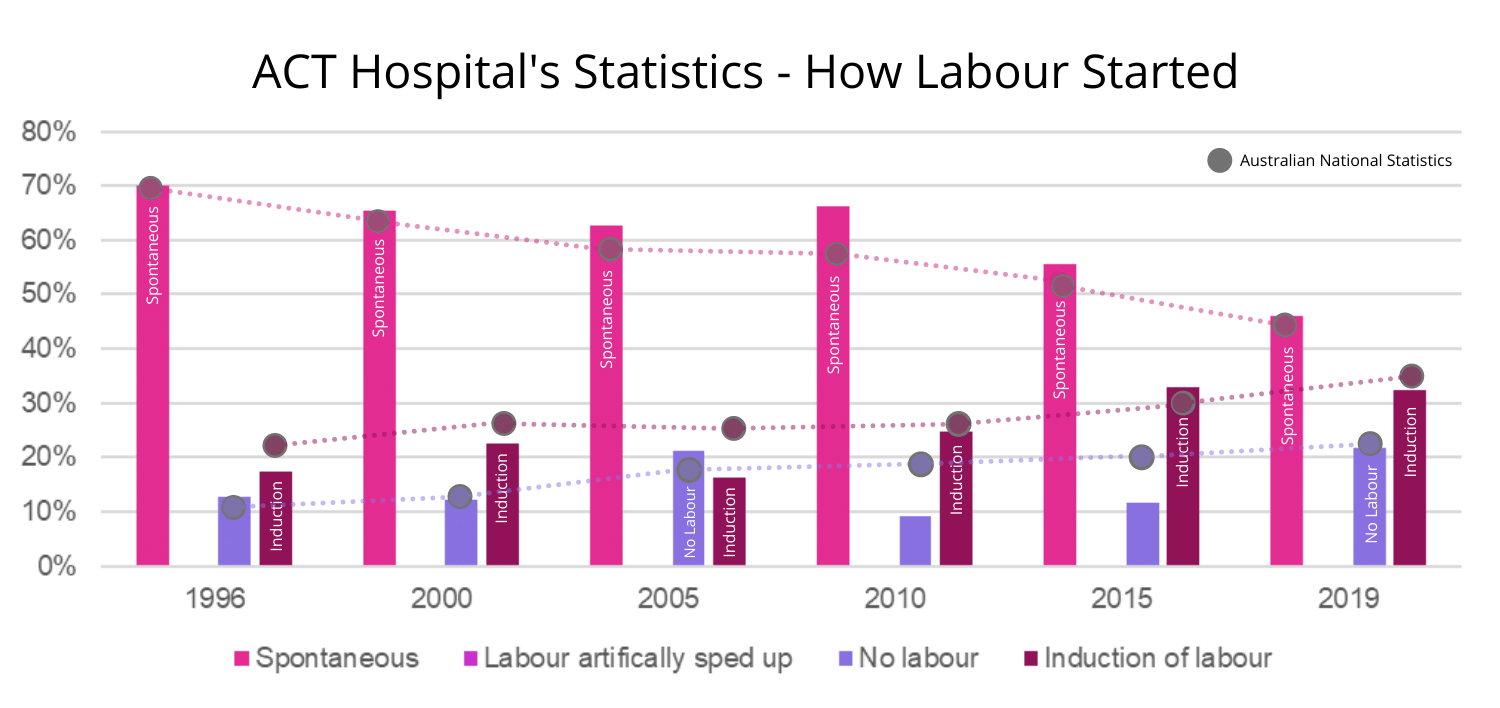
How a woman’s labour starts influences the chance interventions in labour. If labour starts spontaneously, there is less likelihood of interventions. If a woman has an induction of labour there is an increased chance of further interventions. In the above graph, spontaneous labour refers to labour that starts on its own. Please note that ACT statistics did not tell us if spontaneous labour is artificially sped up with medication or breaking of the bag of water. So spontaneous labour in this graph includes labours that are sped up by medical intervention.
Induction of labour in PBB’s graph refers to one or more of the following interventions used to start labour:
- Artificial rupture of membranes
- Balloon catheter to open the cervix
- Prostaglandins placed in the vagina
- Synthetic oxytocin drug to start or speed up labour
No labour is when a woman has an elective (non-emergency) caesarean before labour starts.
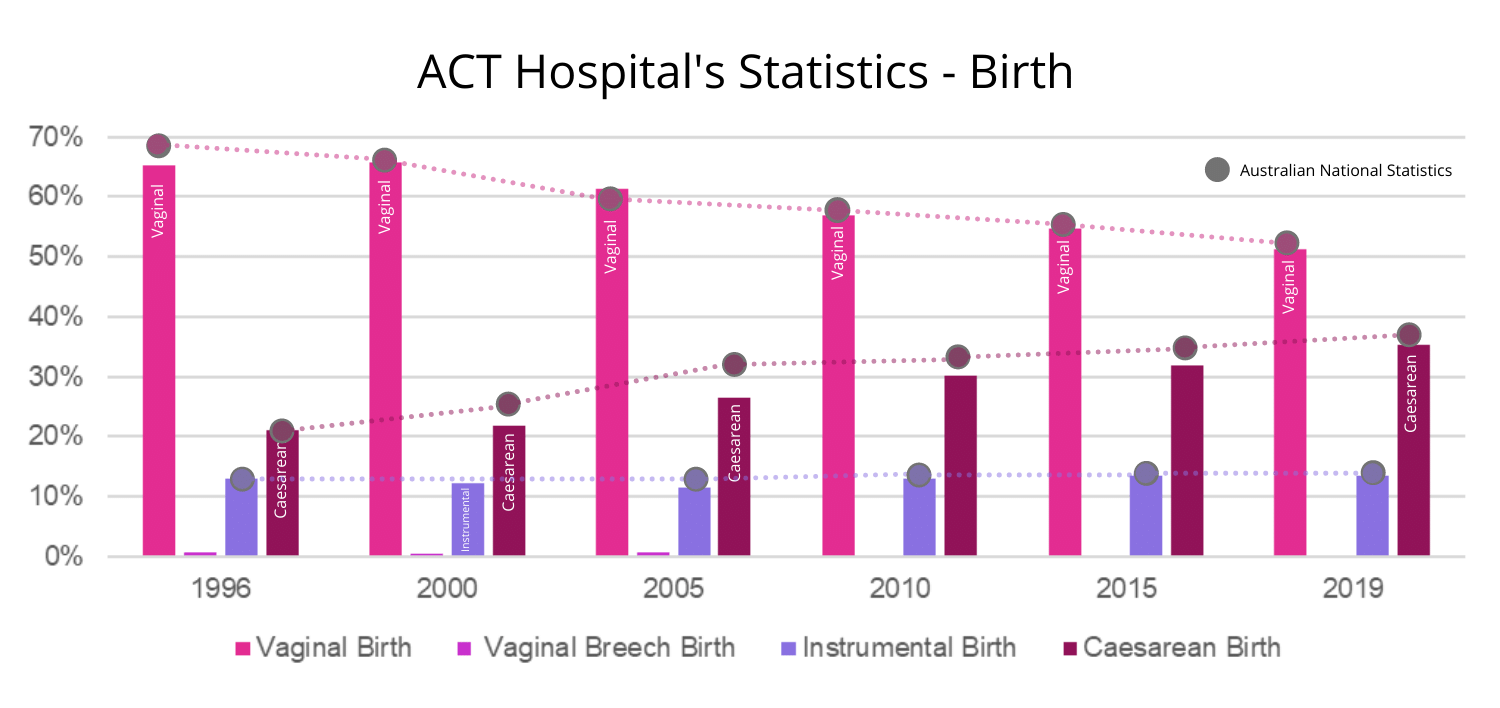
Since 1985, the World Health Organization (WHO) has recommended countries keep the caesarean birth rate between 10–15% to ensure mortality rates are kept low for mothers and babies (WHO’s last statement update was April 2015). Since 1995 the cesarean birth rate has increased every year across Australia. In 2019 the Cesarean birth rate in the ACT was more than double the WHO recommendation.
A small number of breech babies are born vaginally. Instrumental births include forceps birth and vacuum extraction. The caesarean birth rate includes both elective (planned) and emergency (unplanned) caesarean births.
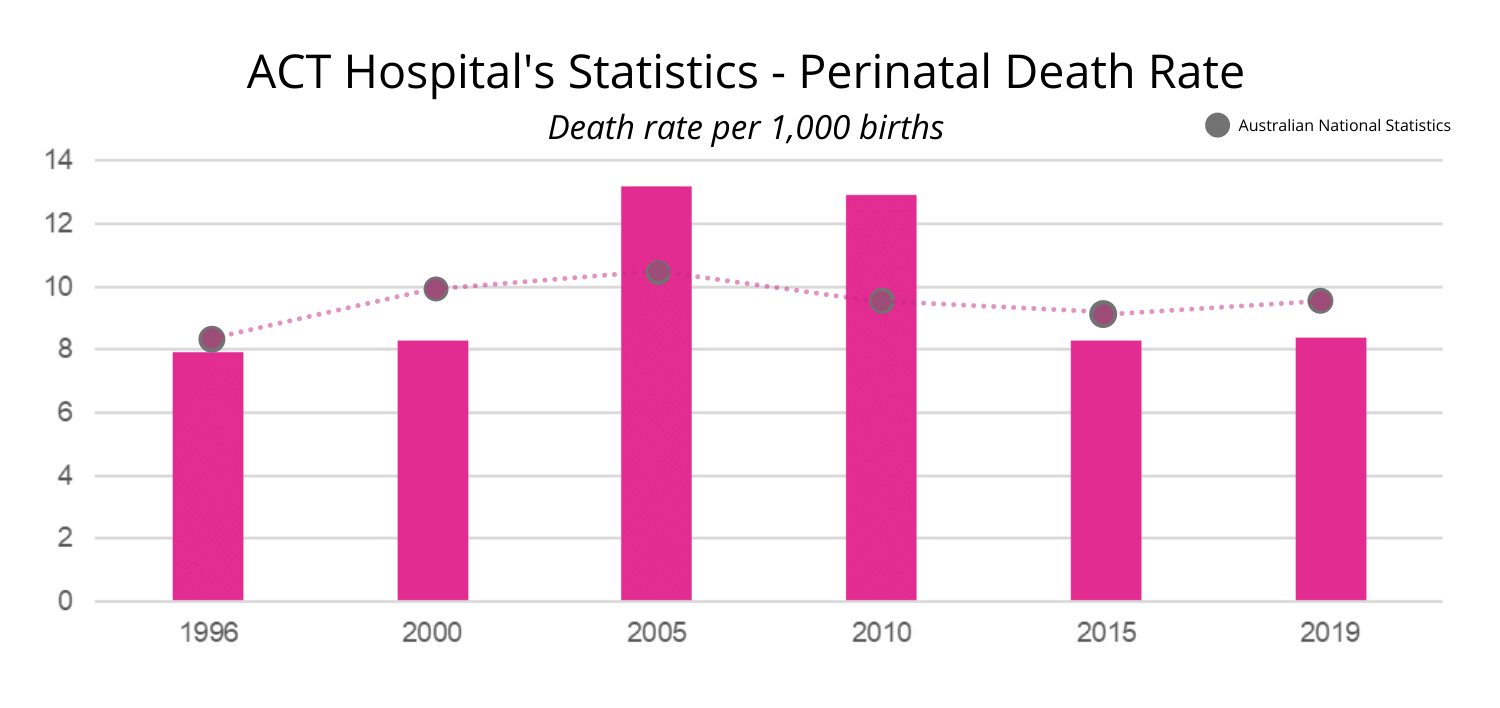
Please note that even though there is a dramatic increase in interventions in labour and caesarean birth – there is no change in the perinatal death rate.
PBB attained the data in the statistics from the Australian Institute of Health and Welfare (AIHW).
Photo Gallery
PBB has created this page to help you be informed about local maternity services. We’d love for you to send us photos of Centenary Hospital for Women and Children to include on this page. Send photos to our webmaster.
Page first published 20th January 2022
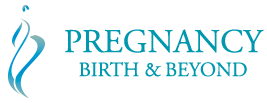

Leave A Comment